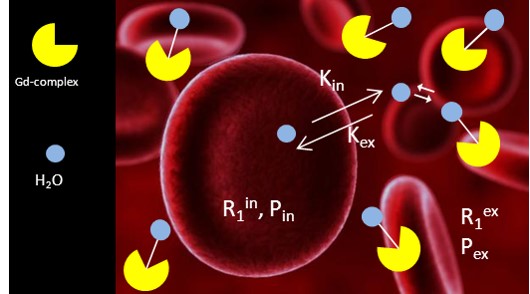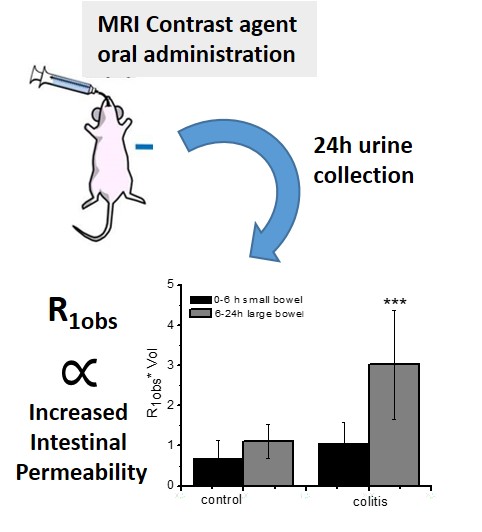Relaxometric Methods for medical/biological issues
This research line relies on the fact that simple and cheap relaxometric methods can be set-up in order to answer to particular medical or biological needs. The main advantage of the relaxometric methods is that the measure of the observed relaxation rate is fast and straightforward and several types of relaxometer are commercially available at easily affordable costs.
Relaxometric method for the re-evaluation of the water exchange lifetime across red blood cell membrane
The method for the determination of RBC membrane permeability to water is based on the measurement of T1 or T2 of a RBC suspension in the presence of a paramagnetic Gd-complex ions in the suspending medium. In principle, the presence of of the paramagnetic complex make the overallwater proton relaxation curve resolvable into two components, namely, a fast component corresponding to water protons in the extracellular, Gd-doped, compartment and a slow component corresponding to the inner cell compartment whose relaxation is modulated by the rate of water exchange across the cellular membrane. The experimental work-up relies on the fitting of the experimental data to a theoretical bi-exponential curve calculated for the effect of two-site exchange.
 [Gianolio E et al
2016]
[Gianolio E et al
2016]
Relaxometric method for the assessment of intestinal permeability based on the oral administration of gadolinium-based MRI contrast agents
The extent of urine excretion of the orally injested GBCAs is taken as a reporter to detect intestinal barrier dysfunction. The method proposed here for the quantitative detection of Gd-based probes in urine is very easy to implement because the paramagnetism of the Gd3+ ions causes a decrease in the water proton relaxation time (T1) which is proportional to the concentration of the agent. The measurement of the longitudinal relaxation rate (R1=1/T1) can be carried out on any NMR spectrometer or cheaper relaxometer with a semi-automatic procedure which takes 1–5 min, depending on the concentration of the paramagnetic probe in urine. As no sample preparation or external calibration is required, the T1-based method results in a much faster procedure with respect to the ‘gold standard’ HPLC or HPLC/MS analysis. The Gd complexes are relatively large molecules (MW, 500–1000 Da), which are highly hydrophilic and are not degraded by colonic bacteria, and so are excellent candidates to report membrane damage along the entire intestinal tract
[Gianolio E et al 2016].